Driving a new Honda CR-V Hybrid made me question my loyalty to my old Toyota RAV-4
Matthew DeBord

- I own a 2017 Toyota RAV4 Hybrid, and I love the crossover. But I recently drove a new 2020 Honda CR-V Hybrid.
- I really, really liked the CR-V Hybrid, now available in the US market.
- Here's the thing: I always like Hondas better than Toyotas — they're fun to drive.
- But I've often ended up buying Toyotas, and I think I'm going to stick with the RAV4, even though the CR-V is better.
Readers perhaps at this point that I'm a big enough fan of hybrids that I own two: a 2011 Toyota Prius and a 2017 Toyota RAV4. I adore the combination of relability and value that these vehicles offer, and I also bought both of the as "certified pre-owned" cars, meaning that I went through a Toyota dealer and got the peace of mind provided by a certification process, plus a warranty.
Now, I intend to buy a used Tesla Model S the next time I'm in the market, but I ended up with the RAV4 last year because I needed a new car in a hurry and already had a relationship with a nearby Toyota dealership.
Over the past six years, I've driven more than my fair share of Toyotas and Hondas, including the RAV4 and CR-V. Both are crucial to their makers' US sales, as they're entry-level sets of wheels for many folks. Until the 2020 model year, you couldn't get a CR-V hybrid in the US. You can now, and Honda let me borrow a nicely-equipped Touring trim that stickered at about $37,000.
I wasn't planning to match it up again my RAV4, but of course I reflexively did. Not a fair fight, as the CR-V was more or less brand new, while the RAV4 is a weathered three year old.
But the fight went on. Here's how it went:
Last year, I bought a certified pre-owned 2017 Toyota RAV4 hybrid. This is not my car. This RAV4 is shiny and new, while as we'll see in a moment, my RAV4 isn't.
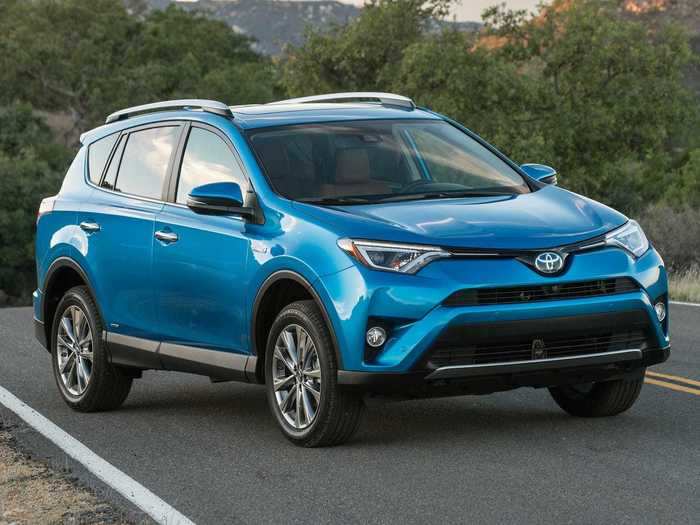
My RAV4 is a family car, and as a result, it's suffered the usual indignities. I've fixed them with tape.

Anyway, the contestants! On the left, my 2017 Toyota RAV4 Hybrid. On the right, a 2020 Honda CR-V Hybrid.
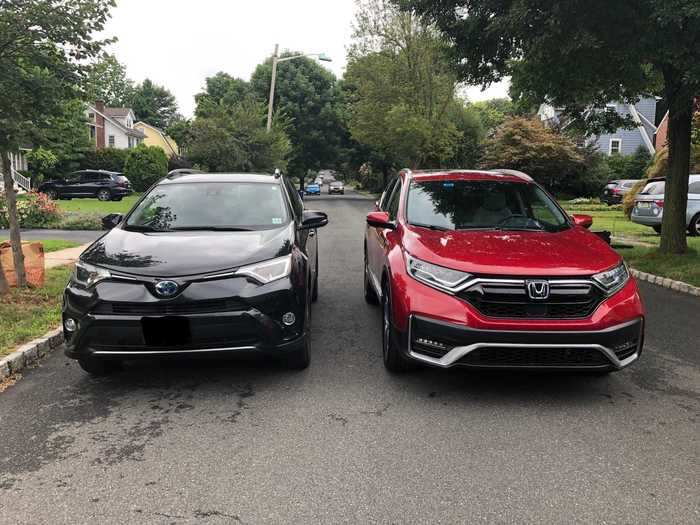
The RAV4 is up first!
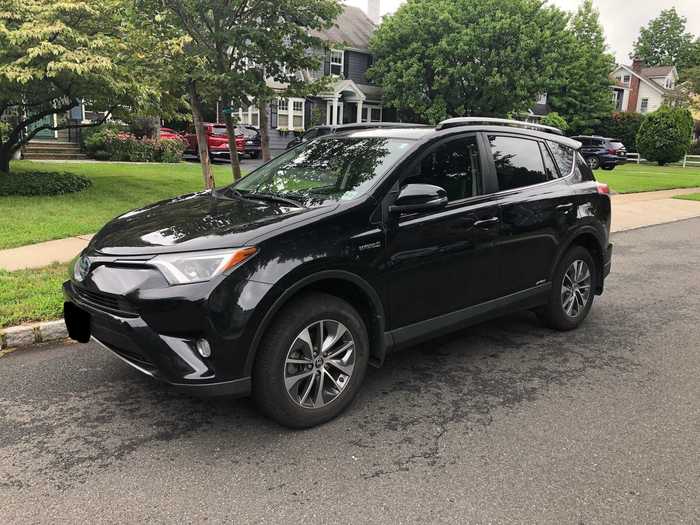
A disclaimer: I don't review personal cars, unless there's something historic about them (I don't review rental cars either). Carmakers loan me "press vehicles" that are new or relatively new, and that have been maintained properly.
I make only one exception, and that's for vehicles I own.
The car has been around since the mid-1990s. My 2017 is from the fourth generation, and the Hybrid went on sale in 2013. I paid less than $30,000 for one in a black paint job (not my favorite, but that's what my dealer had).

My RAV4 benefitted from a mid-cycle design refresh for the 2016 model year and thereafter.
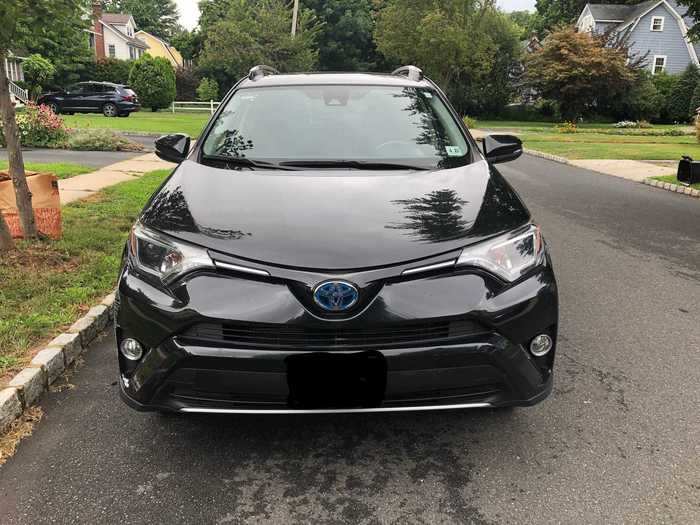
My RAV4 came with some fetching allow wheels, but they aren't the blingiest on the road.

The RAV4 has endured some mishaps. Here's the original fender-bender, the repair of which is holding up pretty well.

The left-rear flank took some damage earlier this year.,
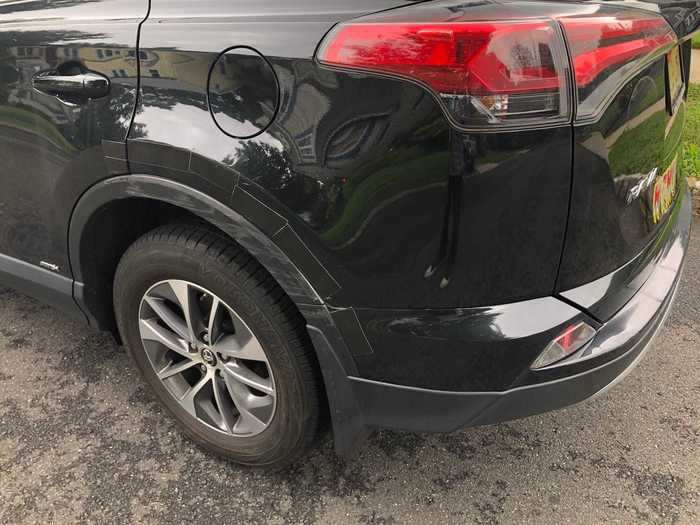
And right before I took photos for this comparison, the right front fender got clonked.

Thank goodness for Gorilla Tape! Although at this point, I'm running low!

I have the all-wheel-drive XLE trim level, one notch above the base car, the LE.
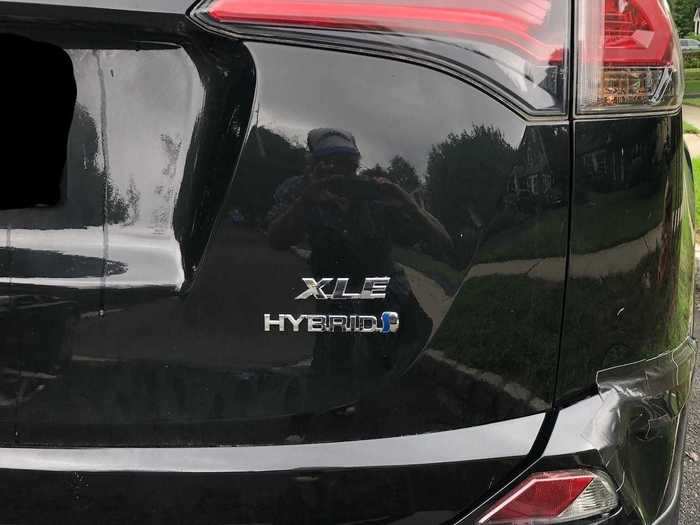
If you want a new XLE Hybrid from the fifth-gen, which debuted in 2018, you're looking at about $30,000. The top-of-the-line Limited Hybrid is almost $37,000.
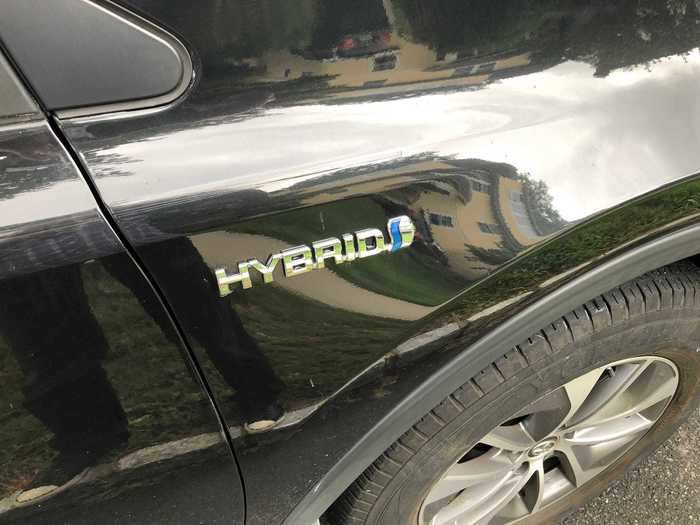
In addition to the Gorilla Tape, I've added other adornments to the exterior. I've been an avid WMFU listener since 1990 — its a New Jersey-based free-form radio station.

The overall design is moderately sleeker than the older, boxy RAV4s.

The integrated spoiler is dashing — and helps a bit with the disadvantaged crossover aerodynamics.
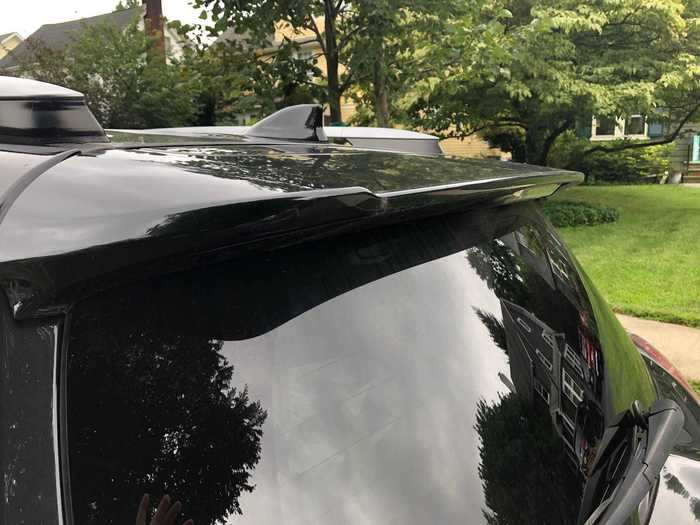
Cargo capacity is great for the segment: 38 cubic feet with the second row up, 73 cubic feet with it down. My RAV4 also has a weatherproof cover for the cargo hold floor.

If I need to tote more cargo, my RAV4 has roof rails.

The drivetrain uses a RAV4-version of Toyota's now-venerable Hybrid Synergy Drive. It's a 2.5-liter, four-cylinder engine, making 194 horsepower with 206 pound-feet of torque. This is a parallel hybrid, although it can run at low speeds for brief periods on battery power and electric motors alone.

The not-inconsiderable power is piped through the CVT transmission to the capable AWD system. I don't keep scrupulous track, but I get about 30-35 mpg on average.
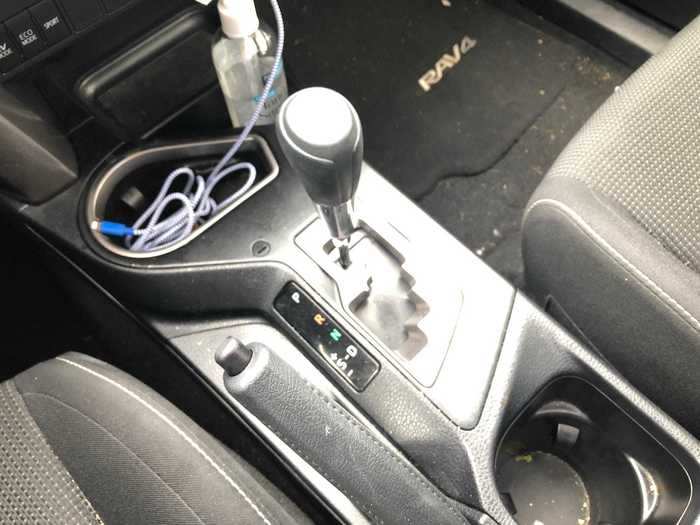
The RAV4 has three drive modes. Once the battery has sufficient juice, the ute can poke along in EV Mode without the gas motor kicking on. Eco Mode maximizes fuel-economy at the expense of pep. Sport mode burns more gas, but it also improves highway passing and merging capability. Still, the 0-60mph time isn't dazzling, at around eight seconds.

The interior is a basic, black cloth affair. Easy to care for.
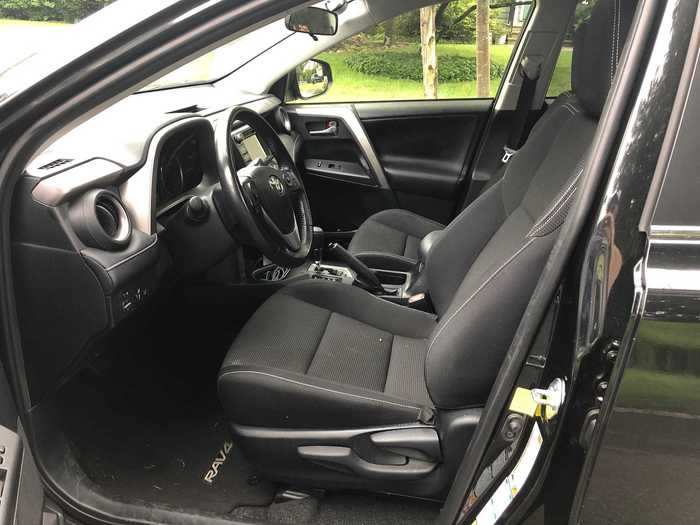
No complaints about the leather-wrapped, multifunction steering wheel.

The instrument cluster is simple, with the dial on the left providing info about how much charge is being returned to the battery. The small center screen can be customized.
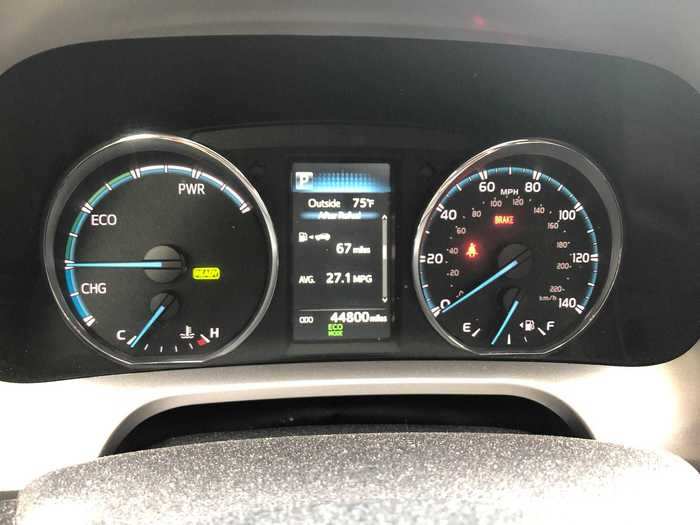
I debated between the RAV4 Hybrid and the larger Highlander Hybrid, in the end going for the RAV4. As it's turned out, the back seat has been large enough to transport my three kids on numerous occasions.
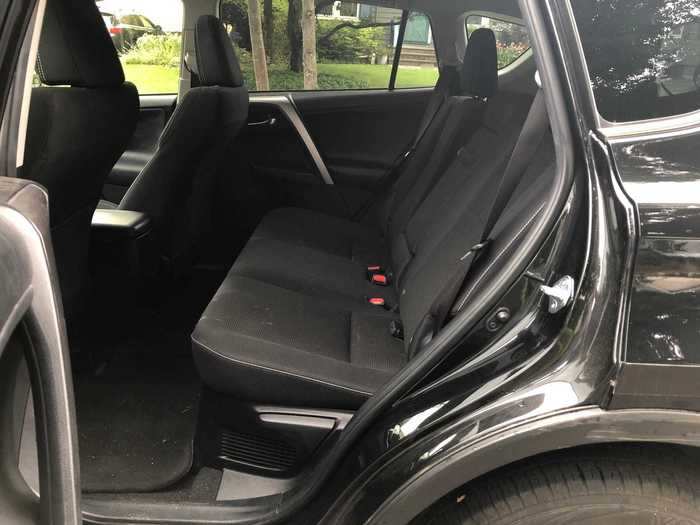
The moonroof is of decent size.

I won't say I'm mad for my RAV4's interior, but it is seemingly indestructible, and that's what you want in a family hauler.

I like the simple layout of the center stack. The climate controls are straightforward and easy to operate in cold weather.
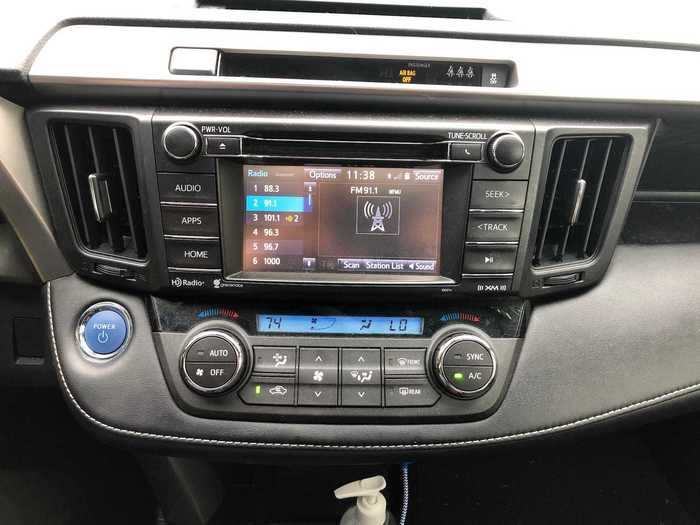
The infotainment system isn't that great, but it gets the job done. There's Bluetooth device pairing, USB connectivity, and satellite radio. My XLE didn't come with a navigation package, however.
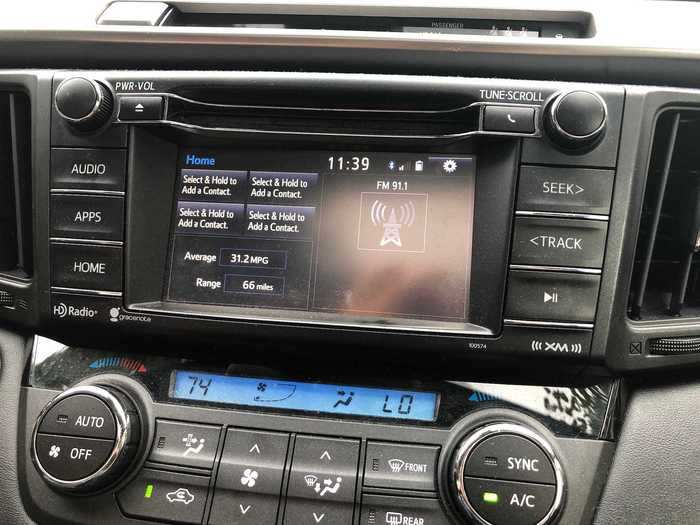
I've been extremely happy with my RAV4 Hybrid. It hasn't given me a lick of trouble since I bought it a year ago, and it sailed through a Northeastern winter.

On to the 2020 Honda CR-V Hybrid!
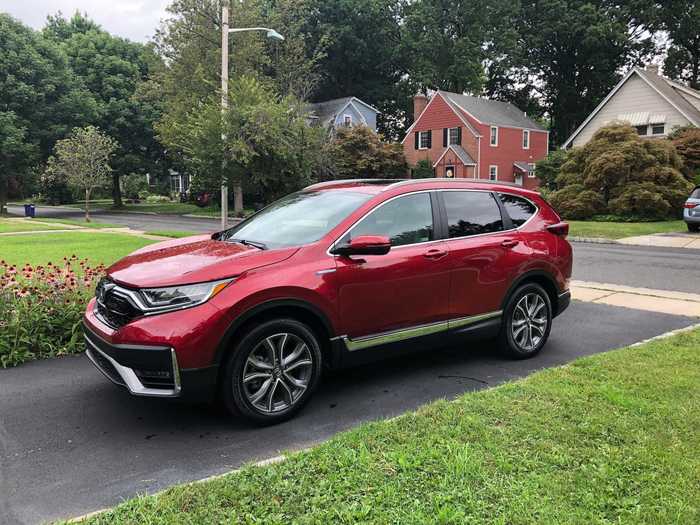
Yes, indeed, it looks much nicer than my RAV4! And not just because of the smashing red paint job and all-new styling — and thanks to being washed!
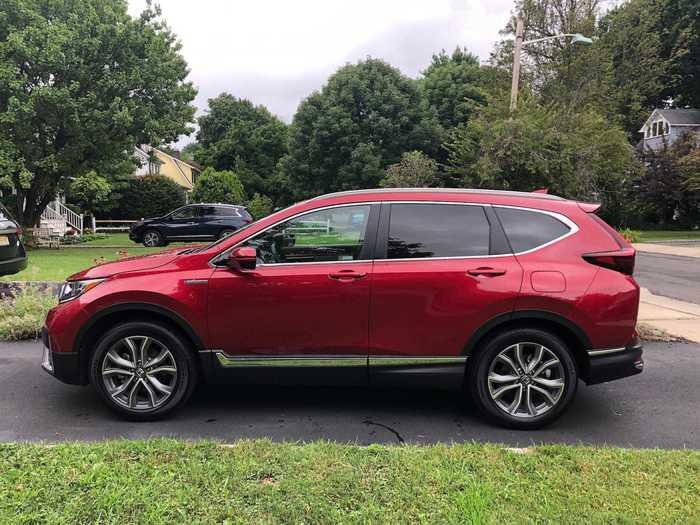
The CR-V is simply a sharper crossover. I usually consider Hondas to be more jazzily designed than Toyotas, although the latter has improved of late.
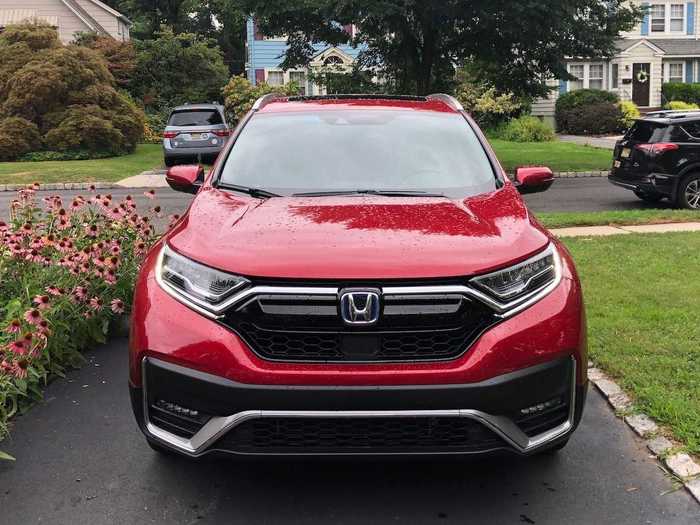
The hybrid offering is a new thing for the CR-V in the US.
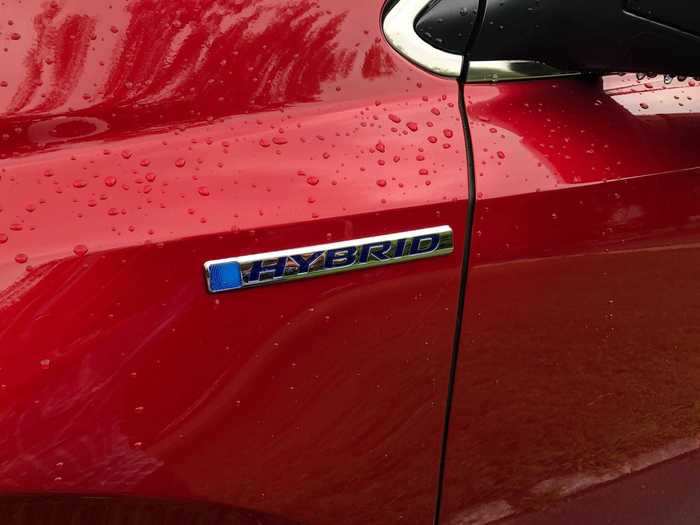
My test car was the top-spec Touring trim, which starts at just over $36,000. We generally get the highest trim level of the vehicles that we review. Like my RAV4, this ute has all-wheel-drive.
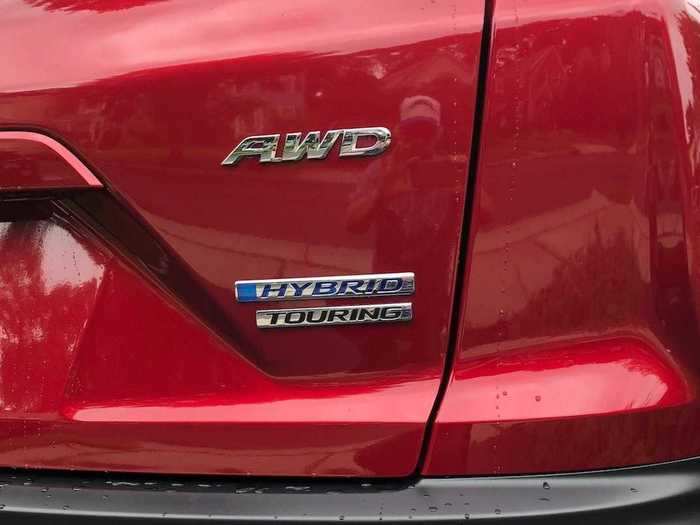
Some attractive 19-inch allow wheels on this CR-V!
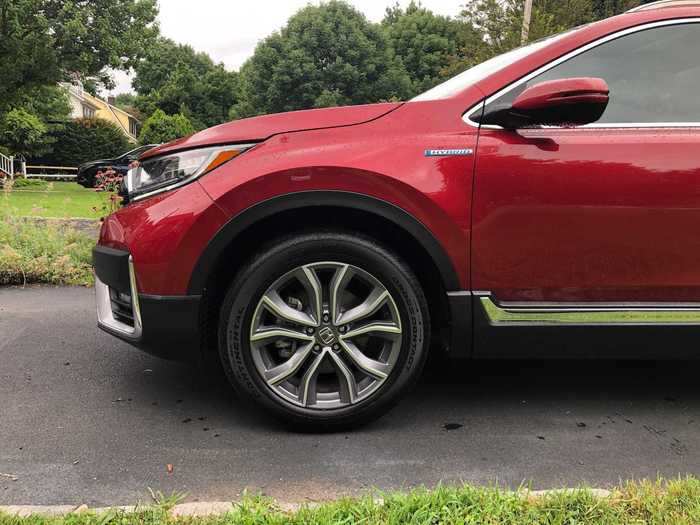
The new CR-V is snazzier than my RAV-4, but is it snazzier than the latest generation of the Toyota? To me, it's a close call — a slight edge to the new RAV4, I'd say.
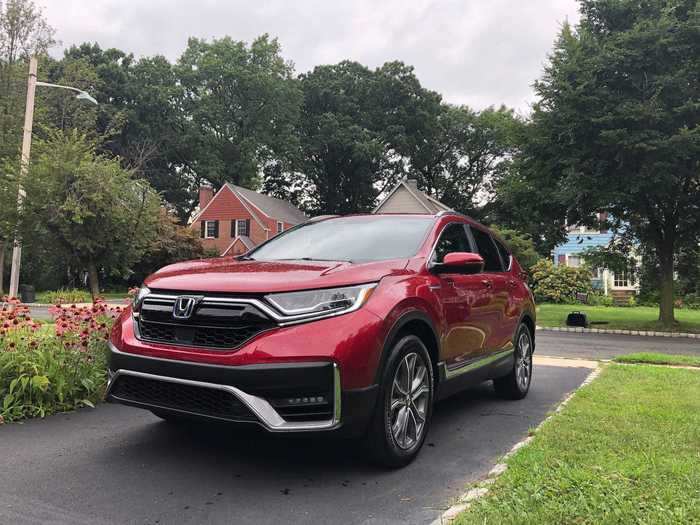
The rear end of the CR-V is sort of busy. Note the tail lights that extend past the surface of the ute's flanks. Flamboyant!
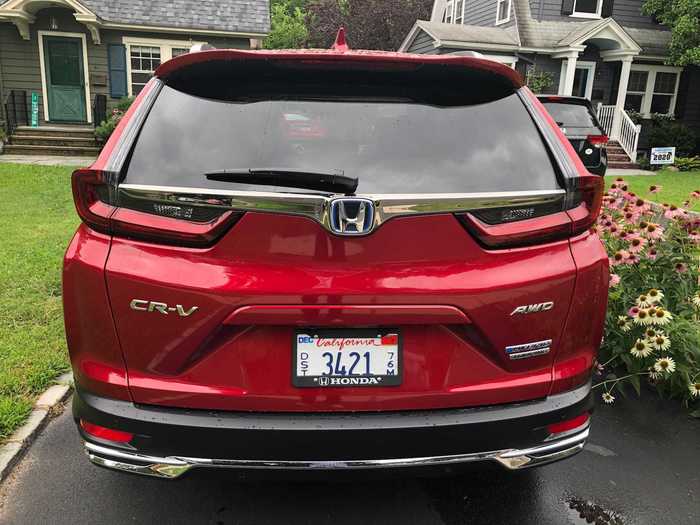
Cargo space is competitive with my RAV4: 33 cubic feet, going up to 69 cubic feet if you drop the rear seats. The carpeted cargo-hold floor would be tougher to clean than my RAV4's.
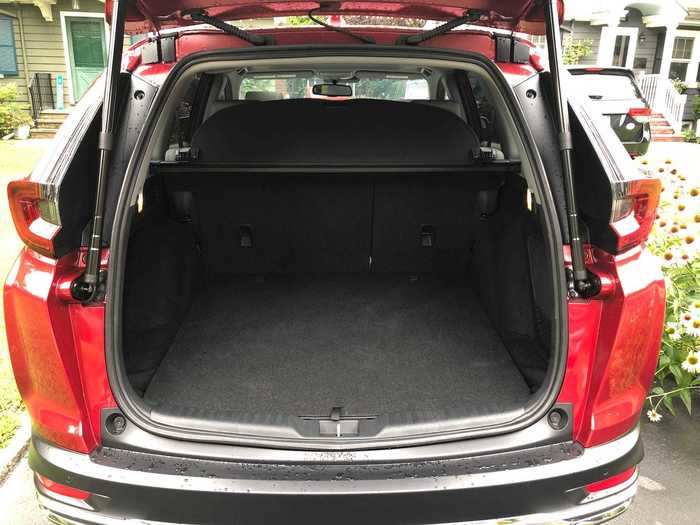
This CR-V also came with roof rails.
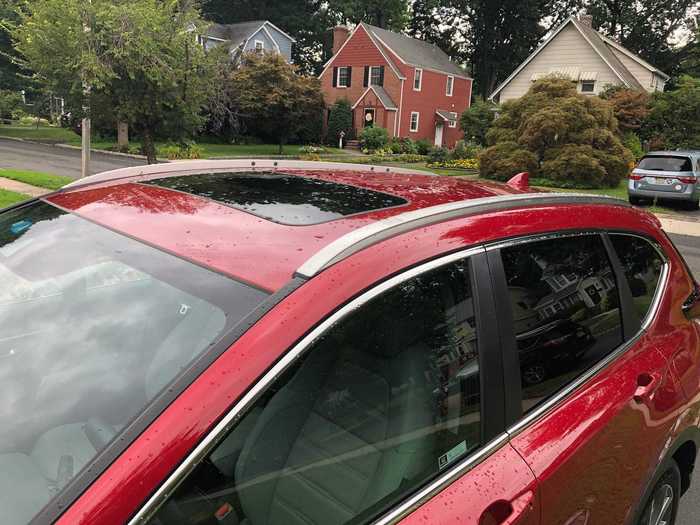
Unlike my RAV4, the CR-V's lift gate was powered.
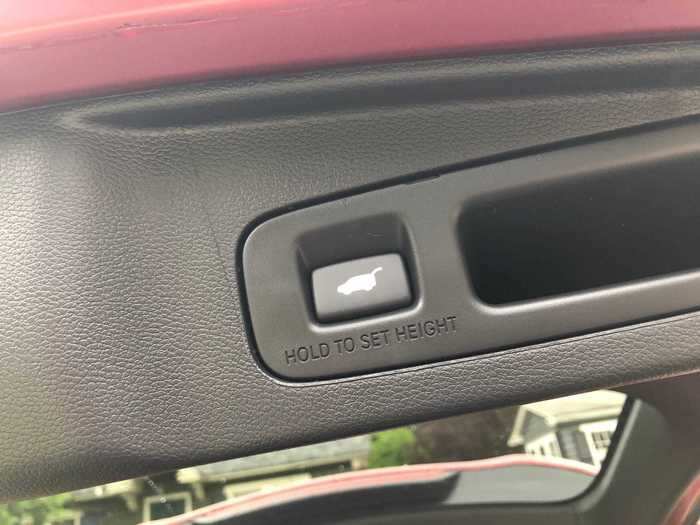
As far the interior contest goes ... well, there is no contest. The premium leather treatment, with heated seats, completely blew away my more utilitarian RAV4.
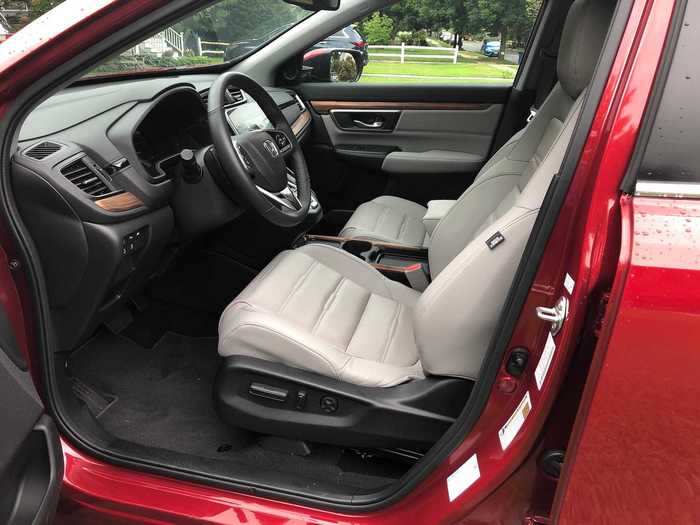
And the wood details added a near-luxury vibe.
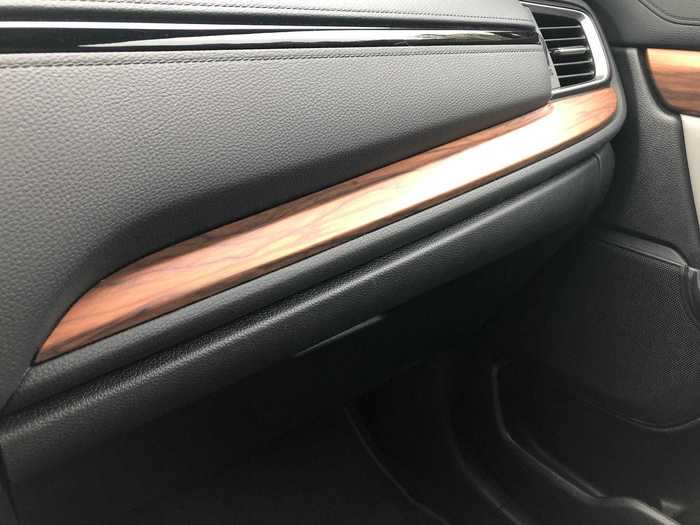
Of course, rear-seat legroom is about the same.
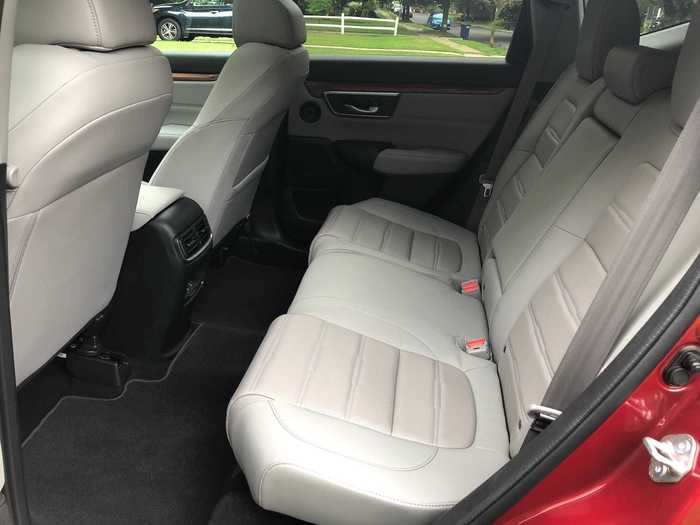
Honestly, I think the moonroof was smaller in the CR-V.

It's a dang nice interior! I absolutely looked forward to jumping in!

Hybrid Synergy Drive vs. Earth Dreams Technology! The CR-V drivetrain uses a 2.0-liter, four-cylinder engine, making 212 horsepower with 175 pound-feet of torque. Combined city/highway MPG of 38 beats my RAV4's 32.
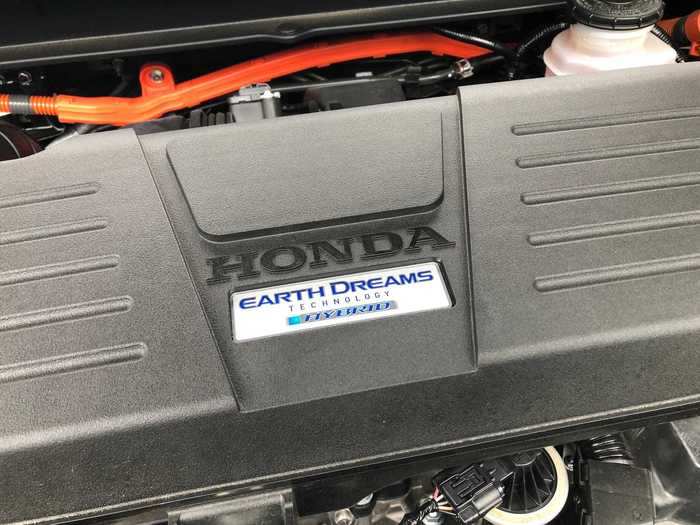
The RAV4 also has a CVT transmission, sending power to the AWD system.
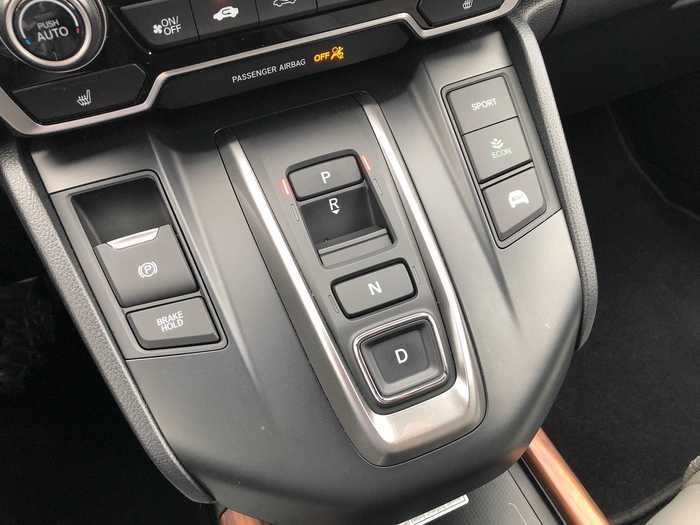
AND the CR-V has three drive modes: Eco saves gas, Sport is fun, and EV allows for brief spurts of all-electric operation.
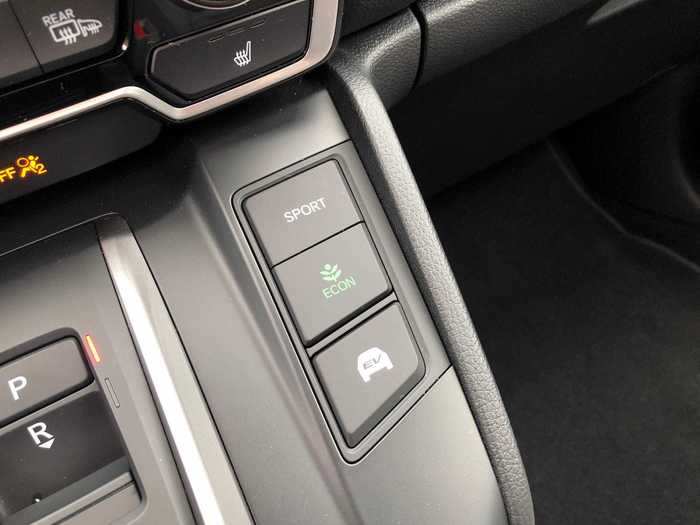
The paddles behind the leather-wrapped, multifunction steering wheel control the intensity of the regenerative braking. Not a feature I have on my RAV4 (which also has regen braking, just not on demand). The instrument cluster is also fully digital.
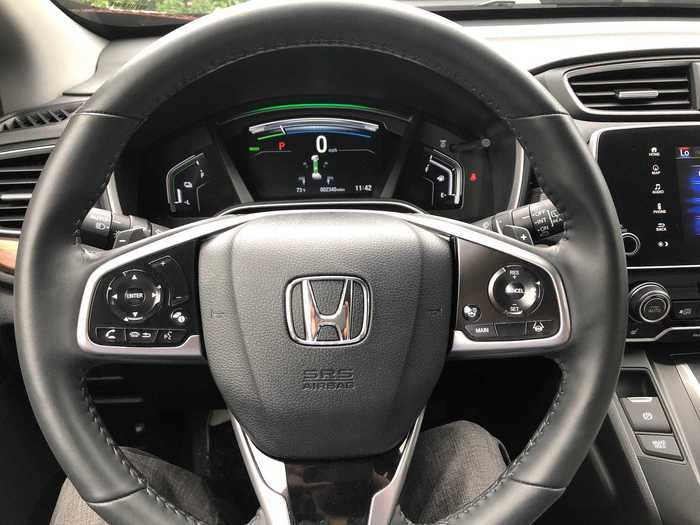
The CR-V's infotainment system is much better than my RAV4's. It runs on a similarly scaled but much more responsive touchscreen, with crisper rendering.
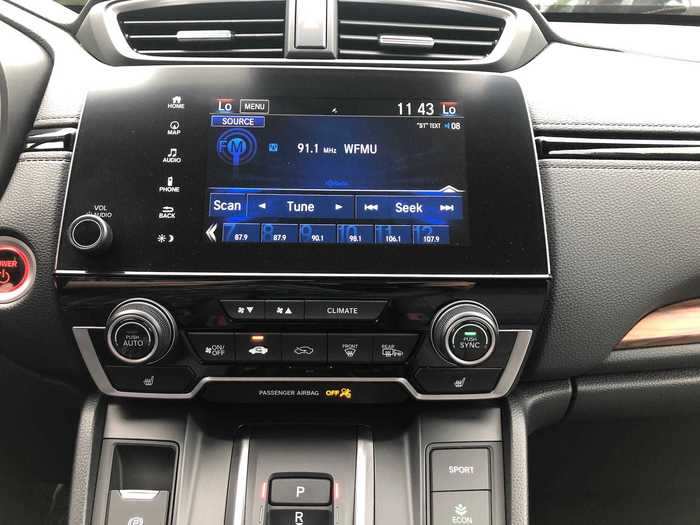
The CR-V also had a navigation package. As for the basics, Bluetooth pairing and USB connectivity were present, but ...
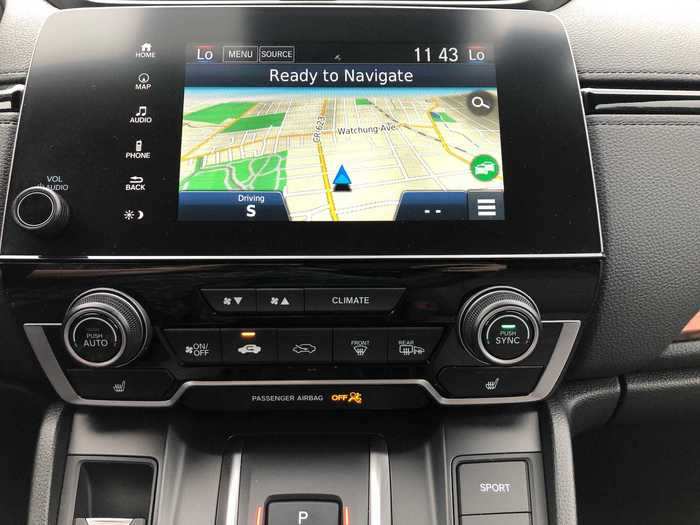
... so was wireless charging!
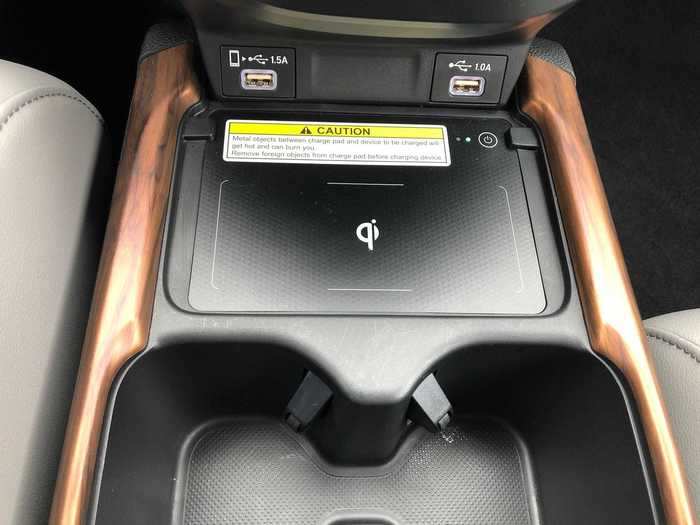
OK, so the obvious winner here is the 2020 Honda CR-V Hybrid. But what about my buyer's remorse?

Well, I couldn't buy the CR-V Hybrid in 2019 because it wasn't yet available in the US market. So the RAV-4 Hybrid was my choice. But if I were choosing again today, between a Honda hybrid compact ute and the Toyota, what would I do?
The classic Honda vs. Toyota battle, for me, always comes down to durability against driving fun. Hondas are almost always more fun to pilot. But I know from experience that Toyotas will run forever, mostly trouble free, and that Hondas, while incredibly reliable, throw a few more problems at you.
In hybrid land, Toyota has also been steadily refining its tech for about two decades, while Honda — not exactly a latecomer — has been at it for less time. Both reduce tailpipe emissions.
So if I'm going with what I know, I'm leaning Toyota. I want my personal vehicles to be cheap to operate and to start every single crank.
Of course, then I jump into the Honda CR-V hybrid and I say to myself, "Zowie! This thing is great!" It's notably quicker, the steering provides a far more connected-to-the-wheels sensation, and the CVT transmission feels more brisk. The suspension tuning is also nice and crisp, compared to the overly smooth demeanor of my RAV4.
(By the way, I've sampled the lastest-gen RAV4, and it's a better driver than my car, although the non-hybrid version didn't impress me on the engine or transmission fronts.)
How would the CR-V stack up against the RAV4 in crummy weather? My RAV4 has two electric motors, one over the rear axle, and in my experience, even deep snow presents few difficulties for the system. The CR-V has just one electric motor, favoring a more conventional AWD design that sends power to the back wheels when needed. That could be a factor in the driving dynamics, giving the CR-V its snappier personality. As for foul-weather challenges, I'd have to get the CR-V back in winter for a proper evaluation.
Dear reader, understand that this always happens to me: I dig the Honda, buy the Toyota. If I were a civilian and not a soldier in the ranks of the auto-writing army, I would perhaps lean Honda, based on test drives.
But what if you want to buy used? Is the RAV4 Hybrid, 2017 edition, a better choice than the new CR-V hybrid?
I'd have to say that if you don't mind giving up on some current tech, the RAV4 is thoroughly compelling. However, my Toyota cost me about what a new CR-V would, for a lower trim level. Obviously, I'd spend less now on the Toyota. So, really, the whole situation is a conundrum.
The upshot is that you'd get a nicer overall car with the CR-V Hybrid, new, and superior fuel economy. But you get a set-it-and-forget vehicle with the RAV4 Hybrid, used. So I'm not ready to make a trade. But what a world we live in! Everybody owes it to themself to sample the hybrid trims of these two stalwart compact crossovers.
READ MORE ARTICLES ON
Popular Right Now
Popular Keywords
Advertisement